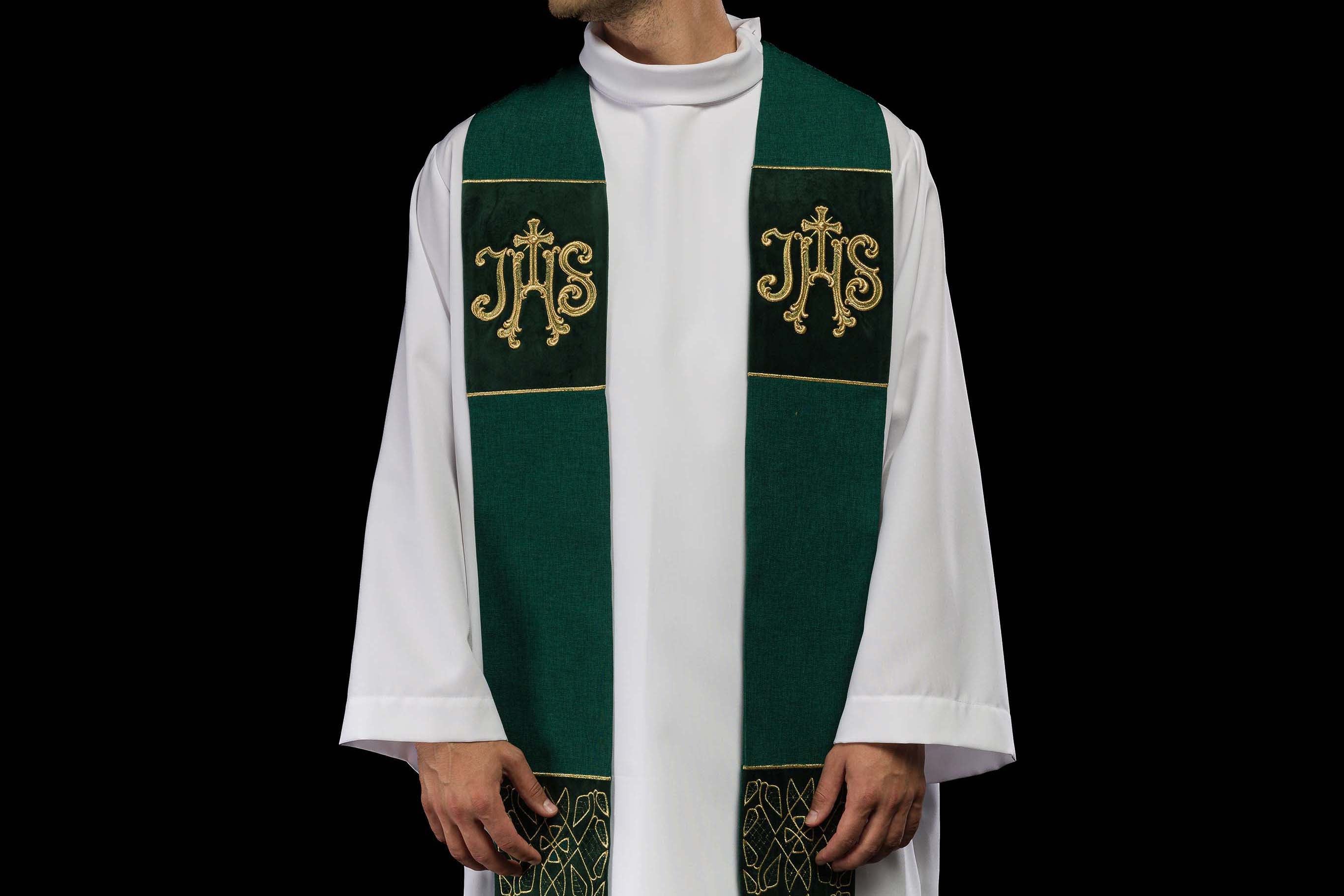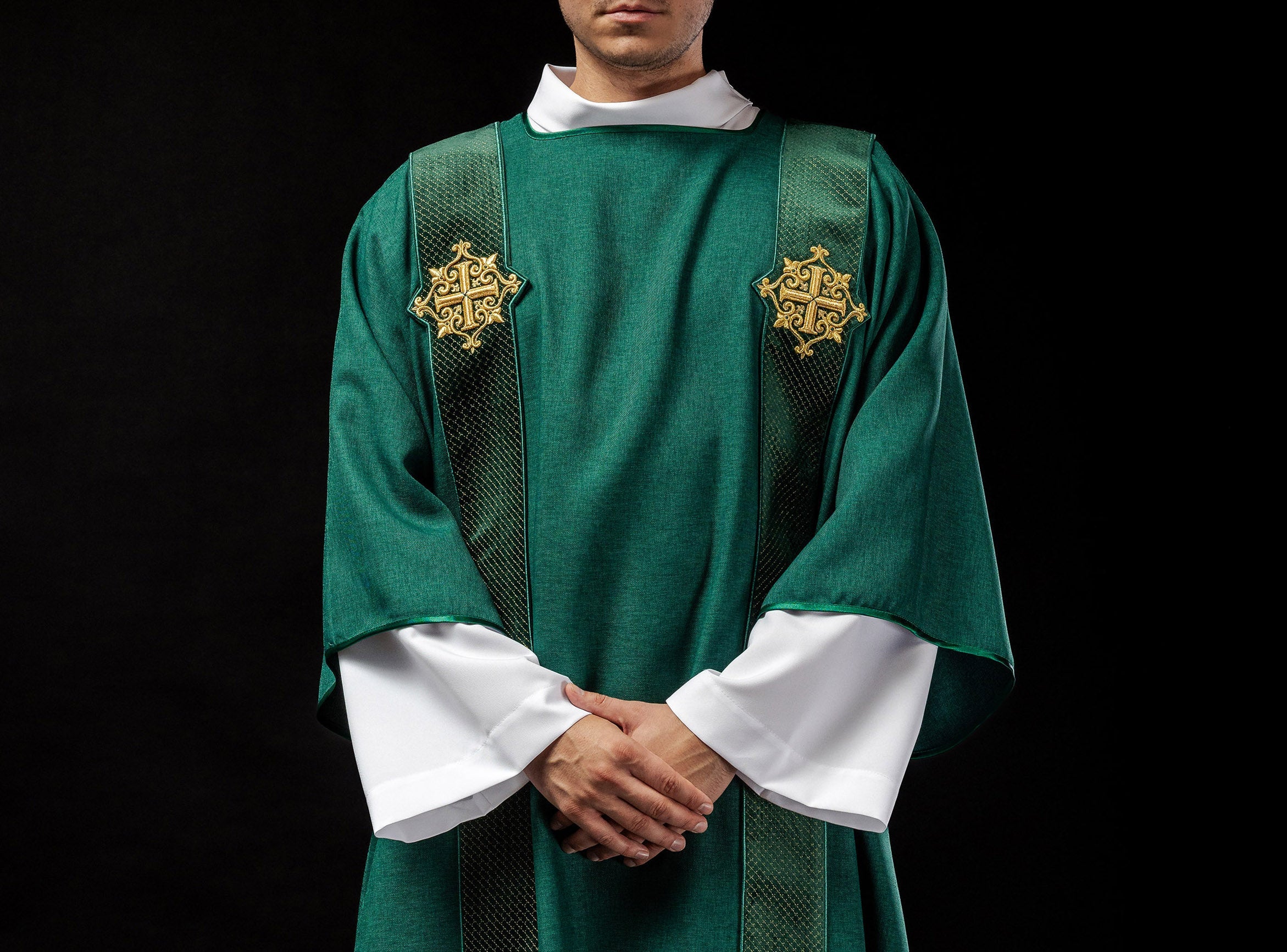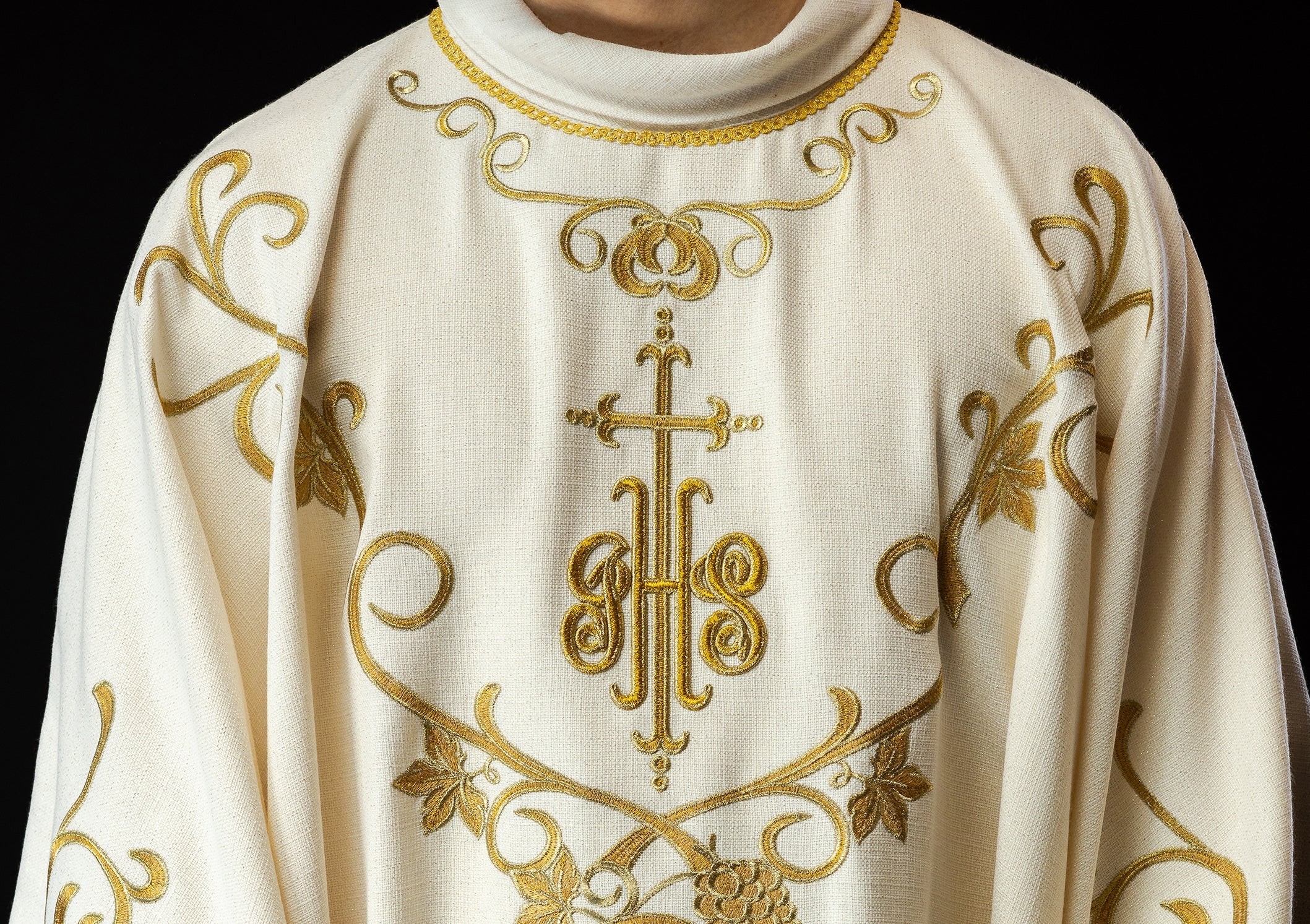
How to Introduce New Songs to Mass?
How to Introduce New Songs to Mass? A Comprehensive Guide for Parish Communities
Introduction: The Role of Music in the Liturgy and the Need to Refresh the Repertoire
Music plays a fundamental role in the liturgy, forming an integral part of the celebration that builds community, expresses faith, and elevates prayer. Faced with changing needs and the desire for a deeper experience of sacred rites, many parishes are challenged with introducing new songs to their existing, often well-established, musical litany. However, the decision to change the repertoire is not trivial. It requires a thoughtful approach that considers theological and liturgical aspects, as well as practical ones. This article provides a comprehensive guide to help clergy, choirs, organists, and engaged laity in the process of introducing new, valuable compositions to Mass, ensuring harmony, compliance with the ritual, and joy of common worship.
Why is it worth introducing new songs to the liturgy?
Changing the musical repertoire in a parish should not be an end in itself, but a response to the specific needs and aspirations of the community. There are many compelling reasons to consider introducing new songs, and understanding them is crucial for effectively carrying out this process.
- Spiritual enrichment: New songs can bring a fresh theological perspective, engage the faithful in a deeper contemplation of the mysteries of faith, and inspire personal prayer. Often, new compositions better reflect the current challenges of Christian life or are more adapted to contemporary language.
- Activating participation: Well-chosen and taught new songs, especially those of a responsorial nature or with an engaging chorus, can significantly increase the active participation of the faithful in the liturgy. They facilitate common singing and build a sense of unity.
- Responding to pastoral needs: The introduction of new songs may be dictated by specific pastoral needs, such as preparation for jubilees, greater attention to specific sacraments (e.g., baptism, marriage), or a desire to emphasize the importance of a given liturgical period.
- Supporting sacred creativity: Promoting and performing new compositions by Polish and foreign artists supports the development of sacred music, giving talented composers and lyricists a chance to present themselves.
- Preventing monotony: Although a proven repertoire is important, excessive exploitation can lead to boredom and routine. Refreshing the musical side of the liturgy helps maintain the engagement and vitality of the community.
Step 1: Forming a team responsible for music and discerning needs
The first and crucial step in introducing new songs is to create a strong foundation in the form of a group of people responsible for music in the parish and to accurately discern current needs. It is this team that will be the initiator, coordinator, and implementer of changes.
a) Establishing a Liturgical Music Committee or Working Group
It is worthwhile for not only the organist and choir to participate in the process, but also representatives of the pastoral ministry, the parish council, and even singing parishioners. Such a group can:
- Determine the objectives of introducing new songs.
- Identify gaps in the current repertoire.
- Prepare proposals for new songs.
- Create a schedule of activities.
- Organize workshops and lessons.
b) Determining the needs of the community and the liturgical context
Before we start choosing specific songs, we should ask ourselves a few key questions:
- What are the current strengths and weaknesses of music in our parish?
- Are the faithful open to new musical forms?
- Which songs are most popular among parishioners?
- Which liturgical periods require a particular refreshment of the repertoire?
- Are we planning any special pastoral events that require dedicated songs?
- Is our choir or band ready to learn new songs?
The answers to these questions will help guide further action and choose songs that best fit the specifics of the parish.
Step 2: Selection and evaluation of new songs
Choosing the right songs is the heart of the whole process. The criteria should be multidimensional, covering theology, liturgy, aesthetics, and practical performance.
a) Theological-liturgical criteria
According to the principles of the Church's liturgy, songs should be consistent with the doctrine of faith, the content of a given part of the Mass, and legal norms (e.g., the Instruction of the Polish Episcopate on liturgical music, documents of the Second Vatican Council).
- Compliance with the Magisterium of the Church: The lyrics of the songs must be consistent with the teachings of the Church, free from theological errors.
- Appropriate content and form: The song should fit its function in the liturgy (e.g., song for entrance, preparation of gifts, communion, adoration, conclusion). The depth of the message is important.
- Language and style: Songs should be chosen whose language is understandable to most of the faithful, but at the same time maintains an elevated and sacred character. Let us avoid songs that are infantile, trivial, or overly emotional at the expense of content.
- Compliance with the liturgical calendar: Songs should be adapted to the liturgical period (e.g., Advent, Christmas, Lent, Easter, Ordinary Time) and to specific celebrations (e.g., patron saint feasts, jubilees).
- Authority and renomination: It is worth reaching for songs by proven authors, recognized in the sacred music environment, whose works are often performed in other parishes and dioceses. This applies to both lyricists and composers.
b) Aesthetic and performance criteria
In addition to theological-liturgical requirements, songs must be feasible and aesthetically acceptable to the community.
- Melody and harmony: The melody should be catchy, easy to remember, but not banal. The harmony should be pleasing to the ear and support the text.
- Difficulty level: It should be assessed whether the choir or band is able to correctly perform a given song, both vocally and instrumentally.
- Possibility of common singing: Songs that facilitate the active participation of all the faithful are preferred – with a simple, repetitive chorus, in the appropriate key.
- Availability of materials: Let's make sure we have sheet music (scores), accompaniments, or arrangements in the appropriate formats. The availability of sample recordings is also very helpful.
- Modernity and tradition: It is worth maintaining a balance between songs of a traditional nature and newer compositions that may attract younger generations. In the offer of the haftinausa.com company, we can find many beautiful, modern arrangements of traditional songs, as well as completely new compositions that combine deep content and aesthetic value. For example, beautifully embroidered vestments or stoles with motifs referring to Eucharistic symbolism can inspire the performance of songs with a deep message.
c) Examples of songs worth considering
It is worth regularly familiarizing yourself with novelties issued by sacred music publishers, browsing internet resources (e.g., portals with sheet music), and drawing inspiration from the repertoire of other parishes. Searches can be started with songs created for important church events, such as World Youth Day, or follow the work of recognized composers of sacred music.
Step 3: Preparation and learning of new songs
When the selection has been made, it is time for the most difficult, but also the most satisfying part – learning and introducing songs into parish life.
a) Developing a teaching plan
Each new song requires time to master. A realistic plan should be created, taking into account the possibility of mastering the melody and text by the choir, band, and – ultimately – all the faithful.
- Schedule: Determine when the song is to be performed for the first time in the liturgy. Then go back to plan the appropriate number of rehearsals for the choir/band and the moments when the song will be presented to the faithful.
- Teaching methods: Use a variety of methods: rote learning, distributing texts and sheet music, using sample recordings, individual consultations.
- Involvement of the choir and band: The parish choir or band is the executive core. They should be provided with appropriate rehearsal conditions, sheet music, and support from the organist or conductor.
b) Preparing materials for the faithful
In order for the faithful to actively participate in the singing, they need appropriate materials.
- Hymnals: If the parish does not have its own hymnal, an extended edition with new songs can be prepared, or special additions and inserts can be created.
- Online materials: Sharing lyrics and sheet music on the parish website, in social media, or through parish apps can greatly facilitate learning.
- Learning in parishes: Sometimes it is worth organizing special evangelistic meetings or music workshops, during which we will learn new songs together.
c) Conducting rehearsals
Regular and effective rehearsals are the key to success. The organist or conductor should focus not only on learning the melody and text, but also on developing the appropriate dynamism, phrasing, and consistency with the liturgical character of the work.
- First rehearsals: Focus on the basics – melody, rhythm, and text.
- Accompaniment: Developing a common sound with instruments (organ, guitar, etc.).
- Dynamics and articulation: Taking care of the clarity of performance, adjusting the volume to the liturgical space.
- Involving the faithful: If possible, parishioners can be invited to some rehearsals or fragments of new songs can be presented before the start of Mass, encouraging common singing.
Step 4: Introducing new songs to the liturgy
The moment of the first performance of a new song in the liturgy is the culmination of previous efforts. It should be properly planned to be as effective as possible and positively received by the community.
a) Introduction strategy
Many new songs should not be introduced at once. It is better to gradually, methodically include them in the repertoire.
- Gradual inclusion: Start with one or two songs that have the greatest potential to engage the community.
- Determining the place in the liturgy: Decide in which part of the Mass the song will be performed. It is good to start with songs for entrance or conclusion, which are more well-known and easier to sing by everyone.
- Informing the faithful: Before the first performance, it is worth informing the faithful about the new song, its author, message, and function in the liturgy, e.g., through a short announcement before Mass or in the parish bulletin.
b) Technical aspects of performance
Appropriate technical performance is of great importance for the reception of the song.
- Key selection: The key should be adapted to the vocal capabilities of most of the faithful.
- Accompaniment: The organist or band should provide solid and stable musical support.
- Volume: Appropriate sound should be ensured so that the song is audible and encourages singing, but does not dominate other elements of the liturgy.
- Compliance with the remaining parts of the Mass: The new song must harmoniously blend with the remaining liturgical elements, e.g., with the intention of prayers or the liturgical context.
Step 5: Evaluation and further actions
After the first performances, it is important to assess how the new song has been received and whether it fulfills its task. The process of introducing music is a continuous process.
a) Observing the community's reaction
Pay attention to how the faithful react to the new song:
- Do they sing willingly?
- Does the new song bring new energy to the liturgy?
- Are there positive comments?
- Does something need to be improved in the performance or method of introduction?
b) Further developing the repertoire
Based on the experience gathered, the process can be continued by introducing further songs or working on those that need refinement. It is important to remain open to new proposals and at the same time cultivate what has been proven and valuable.
Summary: Harmony, tradition, and care for the community
Introducing new songs to Mass is a task that requires commitment, knowledge, and sensitivity. The key to success is a harmonious combination of respect for liturgical tradition with openness to new, valuable musical forms. Acting methodically, with care for the needs of the community and in a spirit of cooperation, we can make the music in our parish an even richer expression of faith and a source of spiritual growth. This process requires patience, but its effects – a more lively, deeper, and more engaged liturgy – are a priceless reward. It is worth remembering that even the most beautifully performed song must serve the liturgy and the community, and not dominate it. Finding this subtle balance is our common goal.
Frequently Asked Questions (FAQ)
What are the most important principles regarding music in the liturgy?
The most important principles are: compliance with the teachings of the Church, appropriate content and form adapted to the part of the Mass, beauty of melody and performance, and active participation of the faithful. It is also important to observe liturgical norms and ensure that music does not obscure other elements of the celebration.
Do new songs always have to be in Polish?
According to liturgical norms, it is permissible to use songs in Latin or other national languages if it is justified and approved by the appropriate church authorities. However, for the good of the local community, songs in the native language, which facilitate full understanding and participation, are most often preferred.
Who should decide on the choice of new songs?
The decision to choose new songs should be made jointly by the pastor or a priest delegated by him, the organist, the choir conductor, and the group responsible for liturgical music. It is important to take into account the opinions and needs of the entire parish community.
What are the most common mistakes when introducing new songs?
The most common mistakes are: introducing too many new songs at once, choosing songs of questionable theological or artistic value, lack of proper preparation and learning of songs, ignoring the needs and performance capabilities of the choir or chorus, and lack of involvement of the faithful in their learning. Improper sound or too loud performance can also be a problem.
Are there any legal restrictions regarding the performance of songs in the church?
Yes, first of all, the lyrics and melodies of songs must be consistent with the teachings of the Church and general liturgical regulations. Copyright law also applies, although in the liturgical context there are often certain exceptions or licenses, e.g., when using official diocesan hymnals or publications with appropriate licenses.
How to encourage the faithful to learn new songs?
This can be done by regularly presenting songs at rehearsals, sharing sample recordings, placing lyrics and sheet music in easily accessible places (e.g., on the parish website, in the bulletin), and by organizing parish music workshops. It is important that the performers themselves (choir, organist) are enthusiastic about the new songs and that their performance is of a high standard.
Does liturgical embroidery affect the reception of songs?
Although there is no direct relationship, the richness and quality of liturgical vestments, such as vestments or banners, which are offered by haftinausa.com, create an appropriate atmosphere of sacrality and beauty around the liturgy. Beautiful, richly decorated vestments can inspire a deeper experience of the celebration, including common singing. A well-chosen vestment or stole with Eucharistic motifs can subtly refer to the message of the song being sung, creating a cohesive visual and musical experience of the liturgy.
How long should the process of introducing one new song last?
The time needed to effectively introduce one song may vary and depends on its complexity and the capabilities of the community. Usually, this process takes from several weeks to several months, including the selection, learning by the choir, rehearsals, and then the gradual introduction of the song into Mass and learning it by the faithful.
Are there specific liturgical periods in which it is easier to introduce new songs?
New songs can be introduced in any liturgical period, but certain moments may be more conducive. For example, ordinary time is often a good time to experiment with the repertoire, while Advent or Easter may require more traditional, familiar songs so as not to disturb the character of these special periods. However, it is worth taking every opportunity to enrich the liturgy.
How to assess the success of introducing a new song?
Success can be assessed on the basis of several criteria: the degree of involvement of the faithful in singing, the quality of performance by the choir and organist, the compliance of the song with the liturgical character of a given part of the Mass, as well as the overall prayerful atmosphere and spiritual reception of the community. Positive opinions and greater interest in the liturgy also testify to success.
Summary and recommendations
The process of introducing new songs to Mass is not only a technical matter, but above all a pastoral one. It requires wisdom, patience, and openness to the action of the Holy Spirit, who inspires the creation of beautiful and deep music. Let us remember the liturgical principles, develop talents in our communities, and ensure that music always leads us to God and builds the unity of the Church. If you are looking for inspiration or want to expand your repertoire with beautiful and valuable works, we cordially invite you to familiarize yourself with the offer of HAFTINA TEXTILE GROUP SP. Z O. O., where you will find a rich selection of liturgical vestments, which can also provide a beautiful backdrop for sublime moments of prayer.
```




